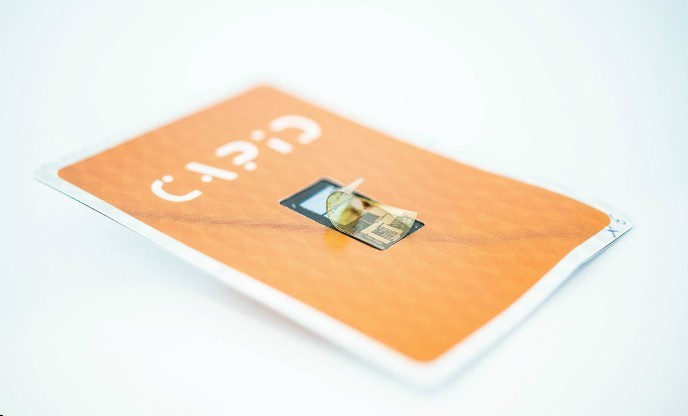Technology brings wireless communication to millions of everydayobjects
Capacitive tokens interact with touchscreen devices and readers. The objects – in this case the capacitive tokens – are thin, flexible, metal oxide tags that can be integrated into paper and plastic products like tickets, certified documents and payment cards. “The potential of this technology is extraordinary,” observes Marco Dehouwer, project manager at Cartamundi, a leading Belgian manufacturer of card and board games that is coordinating the EU-funded CAPID project. Capacitive tokens can interact with over 4.5 billion mobile phones in use worldwide, as well as with the large number of touchscreens now being integrated into cars, coffee machines, vending machines and other everyday objects.
Unique, secure way of communication
The CAPID team developed a system through which a tiny, flexible tag is inserted into an object. This object, which could be as small as a card or a label, can then be identified when placed on a touchscreen. The tags send a dynamic signal to the reading devices, making it possible to identify and locate low-cost, high-volume products. The connection to the internet is established simply by placing the tagged object on the touchscreen. Every capacitive token tag has its own ID. A potentially vast number of tags, all of them identifiable, will make it possible to create unique codes for any product. Small capacitive antennas are manufactured directly on chips as part of the chip manufacturing process. The result is a simple and very-low-cost tag, since no external antenna or assembly procedure is required. The new tag is based on thin-film transistor technology and powered by a thin-film battery or a thin-film photovoltaic cell that converts light from the touchscreen. The 12-bit thin-film capacitive identification tag achieves up to 36 Bps data transfer rates at 0.6-V supply voltage compatible with commercially available touchscreen devices without requiring modifications. The flexible thin-film integrated circuit has a 0.8 cm2 on-chip monolithic antenna and absorbs only 38 nW of power at 600-mV supply voltage. The project team created new processes to better align chip fabrication and integration with paper products. This will reduce the cost of connected paper products. Thanks to the projected ultra-low cost of under 1 cent, the tags provide a solution to label trillions of everyday objects. The readers will be existing touchscreen devices, so no additional hardware, major reconfigurations or additional costs are involved for users.
Game changer for paper products with embedded electronics
“Our tag is paving the way for many new applications compared to standard radio frequency identification or near field communication solutions since it takes advantage of the widespread availability of touchscreen readers compared to the limited amount of near field communication readers,” explains Kris Myny, principal scientist and R&D team leader at project partner imec, a world-leading R&D and innovation hub in nanoelectronics and digital technologies. According to Myny, they are testing the tag system and communication method using different touchscreens from several brands, including Apple, Samsung and Huawei. “Thanks to the unique CAPID functionality, we’re able to create the playing cards of the future, blurring the boundaries between digital and physical, and enabling new gaming experiences for upcoming generations,” concludes Dehouwer.
Keywords
CAPID, tag, touchscreen, capacitive token, reader, chip







